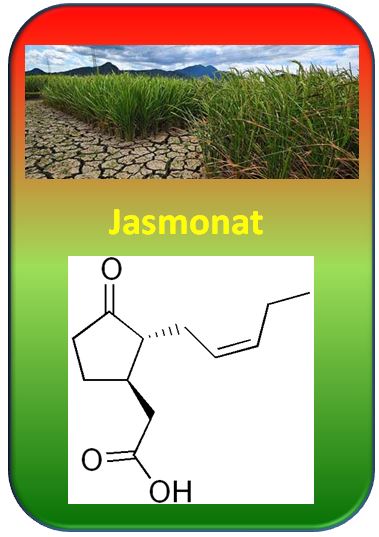2015_10 Jasmonates and the Grammar of Drought
What is the topic?
Jasmonic acid and its variants respresent the plant version of adrenalin and are produced in response to quite different stress conditions. However, different stress conditions require different adaptations. How can such a general signal elicit so many different responses? A look on human adrenalin tells: this works by combination with other signals. Adrenalin in the first places evokes a general, more or less unspecific excitation - whether we perceive this as unpleasant stress or as challenging stimulation depends on the signals accompanying this chemical activation. This "Two-Stage Model of Stress Perception" has been well documented by numerous psychological experiments. In a similar way, plants interpret the jasmonate signal differently, depending on the combination with other signals. Basically, there is something like a "Grammar of Plant Stress". In cooperation with the International Rice Research Institute (IRRI) in the Philippines, we try to decipher this grammar for rice, the most important staple crop on this planet.
In the current work we consider different forms of osmotic stress. This type of stress is not only caused by drought, but also often by soil salinity, or, in even more extreme versions, as alkalinisation. Plants respond to these stress types in a different manner, but always appropriately. We analyse, by which signals plants can discriminate the different forms of osmotic stress to activate different adaptive responses. We design a model to explain this and propose that the temporal patterns, by which stress signals arise and decay, are change by accompanying signal. This model leads to specific predictions, which we currently test experimentally.
When we have decoded the "Grammar of Drought", we can try by molecular breeding to adjust the temporal patterns of these signals such that plants can cope with stress more efficiently.
Publication
[40] Riemann M, Dhakarey R, Hazman M, Miro B, Kohli A, Nick P (2015) Exploring jasmonates in the hormonal network of drought and salinity responses, Frontiers Plant Sci 6, doi: 10.3389/fpls.2015.01077 - pdf

